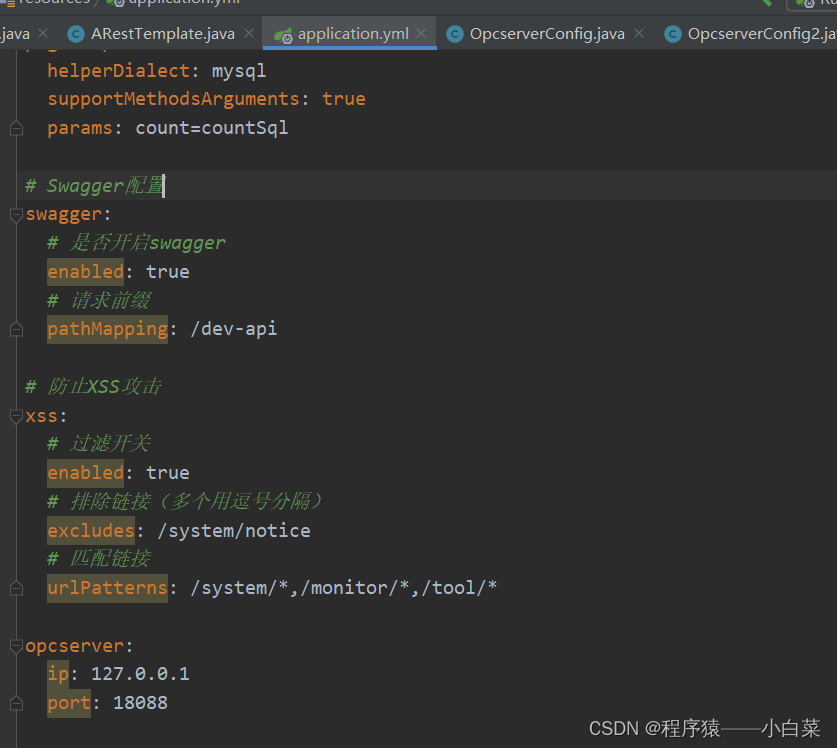1.@Value注解读取方式
application.yml自定义配置

读取配置类
package com.ruoyi.common.core.domain;
import org.springframework.beans.factory.annotation.Value;
import org.springframework.stereotype.Component;
@Component
public class OpcserverConfig {
@Value("${opcserver.ip}")
private String ip;
@Value("${opcserver.port}")
private String port;
public String getIp() {
return ip;
}
public void setIp(String ip) {
this.ip = ip;
}
public String getPort() {
return port;
}
public void setPort(String port) {
this.port = port;
}
}
2.@ConfigurationProperties注解读取方式
读取配置类
package com.ruoyi.common.core.domain;
import org.springframework.boot.context.properties.ConfigurationProperties;
import org.springframework.stereotype.Component;
@Component
@ConfigurationProperties(prefix = "opcserver")
public class OpcserverConfig2 {
private String ip;
private String port;
public String getIp() {
return ip;
}
public void setIp(String ip) {
this.ip = ip;
}
public String getPort() {
return port;
}
public void setPort(String port) {
this.port = port;
}
}
读取指定文件
注意:1.在资源目录(resources)下创建2.@PropertySource不支持yml文件读取。

方式一:@PropertySource+@Value注解读取方式
package com.ruoyi.common.core.domain;
import org.springframework.beans.factory.annotation.Value;
import org.springframework.context.annotation.PropertySource;
import org.springframework.stereotype.Component;
@Component
@PropertySource(value = "opcconfig.properties")
public class OpcConfig {
@Value("${opc.ip}")
private String ip;
@Value("${opc.port}")
private String port;
public String getIp() {
return ip;
}
public void setIp(String ip) {
this.ip = ip;
}
public String getPort() {
return port;
}
public void setPort(String port) {
this.port = port;
}
}
方式二:@PropertySource+@ConfigurationProperties注解读取方式
package com.ruoyi.common.core.domain;
import org.springframework.beans.factory.annotation.Value;
import org.springframework.boot.context.properties.ConfigurationProperties;
import org.springframework.context.annotation.PropertySource;
import org.springframework.stereotype.Component;
@Component
@ConfigurationProperties(prefix = "opc")
@PropertySource(value = {
"opcconfig.properties"})
public class OpcConfig2 {
@Value("${opcs.ip}")
private String ip;
@Value("${opc.port}")
private String port;
public String getIp() {
return ip;
}
public void setIp(String ip) {
this.ip = ip;
}
public String getPort() {
return port;
}
public void setPort(String port) {
this.port = port;
}
}
三.Environment直接读取配置
@Autowired
private Environment env;
public String getOpcIp(){
return env.getProperty("opc.ip");
}